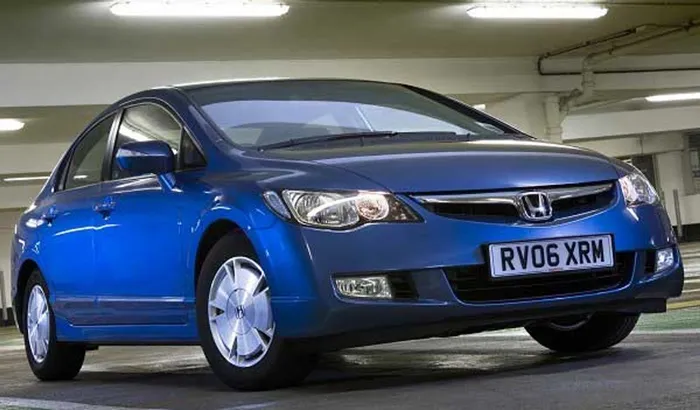Honda hybrid: A year of everything going right

Sean O'Grady:
We've just had to say goodbye to our long-term Honda Civic Hybrid test car. It's been with us for a year, done 15 500km and nothing has gone wrong with it. Which isn't that surprising - it's a Honda, after all.
Hondas were always reliable and nowadays I reckon the brand has caught up with the German makes on build quality, too. I would also guess that the likes of Honda and Toyota are ahead of BMW and Mercedes-Benz when it comes to integrating electronics in their cars but I can't prove that.
In any case the Civic, as well as being a rather larger vehicle than its predecessors with the same badge, is a very tough car indeed. Tough as old boots, as VW used to say about its Golf. Just look at the number of older Civics and Accords you see running around and, here in Britain, the Rover 200 and Rover 600 units that were based on them.
The long-term test car, as relied on for copy by generations of motoring hacks, is a strange thing. Many years ago, it must have been great fun. Sort of. In 1963, for example, the Rootes Group gave one of the British motoring magazines a Hillman Imp to play with for a few months. It was the Rootes Group's new baby car, built to take on the Mini - but born prematurely.
Whatever the reasons, that test car was a lemon: it needed two new gearboxes; other major mechanical parts failed. Even in the 1970's and 1980's you'd find long-term test cars that corroded so quickly that rust spots would appear within months.
Drivers might be harassed today but, when it comes to quality, we've never had it so good.
Which brings me back to the Honda Civic, I suppose. Despite what I just wrote about modern cars, I have had the misfortune of driving test cars that have conked out. On the roll-call of shame: Hyundai Elantra, Range Rover and Nissan Cube.
Others have had niggling little faults such as eccentric satnav or warning lights for non-existent problems, or windows that wouldn't fully close. Yet not even these minor distractions happened to the Civic Hybrid.
However, I suppose the main point of running one of these was to see whether its "new" hybrid technology works. To recap, a hybrid car has an electric motor running in concert with a petrol engine and stores energy otherwise wasted, such as under braking, in batteries to later help power the car under, for example, hard acceleration.
So it saves fuel, cuts emissions and this is green. You don't plug it in to the mains.
Actually, the technology isn't that new: it was first seen in the oddball two-seater Honda Insight back in the 1990's. Since then hundreds of thousands of Honda Civic Hybrids, as well as hybrid Toyota Priuses and Lexuses have been sold and gone round the clock with no ill-effects.
Still consumers seem to be suspicious of them.
The remarkable thing about the Civic Hybrid is what an unremarkable car it is. It looks fairly normal, though it's no oil painting. It has a decent boot, can accommodate four in comfort, five at a squeeze, and runs as smoothly as any of its conventionally powered peers. Except when pressed fairly hard: then the whining, variable automatic transmission makes a bit of a row.
What is a bit too ordinary is the Civic Hybrid's fuel consumption - around seven litres/100km and way short of the 4.8 litres/100km that Honda says it should deliver.
So, if you want a reliable piece of new technology with lower emissions and better fuel consumption, you don't have to go Civic Hybrid because a small diesel might serve as well. But if you do, be assured your Honda won't go wrong. - The Independent, London